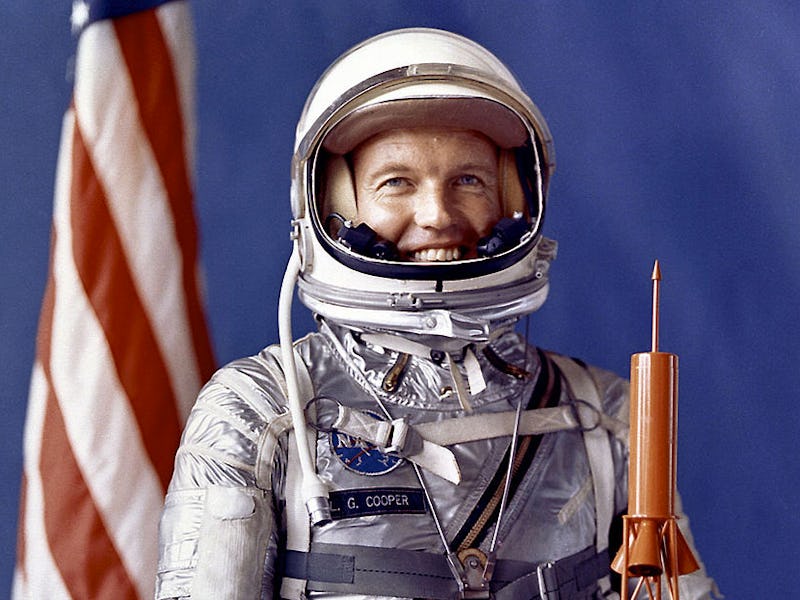Discovery Channel's Search for Astronaut Gordon 'Cooper's Treasure' Isn't a Stunt
Cooper was part of the first class of NASA astronauts. He was also eccentric. But he wasn't crazy.

Gordon Cooper, by all accounts, was made of the “right stuff.” The astronaut, who would later be portrayed by Dennis Quaid, played a critical role in the early days of space exploration — then kept on searching. What he was searching for later in life, however, was different. He was looking for billions of dollars worth of treasure.
Cooper’s secret treasure map is the basis of a new show produced by the Discovery Channel called, appropriately, Cooper’s Treasure. While there’s no date set for its premiere, the plan is that the show will follow the travels of treasure hunter Darrell Miklos, a longtime friend of Cooper. He will attempt to decode the treasure map left by Gordon, who Miklos says worked on it in secret for decades.
On his last Mercury mission in 1963, Cooper first noticed an “anomaly” in the South Caribbean and then allegedly photographed 100 more. It is these anomalies that Miklos says make up the map, and could lead to the uncovering of “billions of dollars worth of treasure.” This map was given to Miklos before Cooper’s death in 2004, with the hope that his friend would eventually find the treasure.
Astronauts Gordon Cooper and Charles Conrad Jr. on a Gemini-5 spacecraft.
Born Leroy Gordon Cooper, Jr. in 1927, the Oklahoma-born astronaut is credited as the first American to sleep in space, be televised from space, and the first to fly twice. In 1963 he broke the record for longest space flight by completing a 122-hour mission on the last Mercury flight, Faith 7. In 1965 he broke an endurance record with pilot Charles Conrad when they traveled a distance of 3,312,993 miles in 190 hours and 56 minutes. He retired from the Air Force and NASA in 1970 and died in 2004 at the age of 77.
But while Cooper is universally commended in the space community for his achievements with NASA, his legacy isn’t without controversy. Cooper was also very vocal about his belief in the existence of UFOs, so convinced that UFOs were deserving of serious study that he testified on the topic before the United Nations in 1978. In his book Leap of Faith: An Astronaut’s Journey into the Unknown Cooper wrote that he first saw evidence of a UFO as a test pilot in 1948, and was immediately told not to speak of it from government officials. Cooper was convinced there was a government conspiracy and demanded accountability until he died.
While Cooper’s Treasure will likely only touch on UFOs, it’s possible they play a role in Cooper’s map and his theory. And, yes, that might sound a little Indiana Jones and the Kingdom of the Crystal Skull, but Cooper was not a crackpot. If he said he saw an anomaly, he likely did. It’s worth remembering that archeologists have found a number of sunken cities around the world and it is certainly clear that Meso-American civilizations, which left many massive temple complexes throughout Latin America, were potentially capable of building structures visible from orbit.
This is not to say that Miklos is going home rich, but don’t be surprised if he finds something.